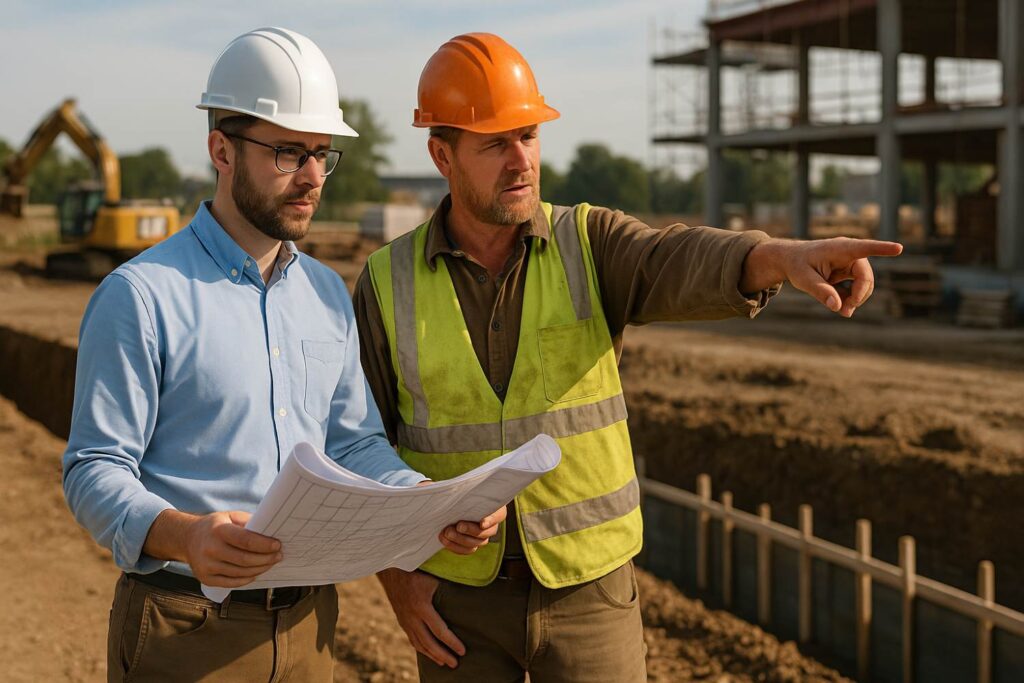
Every contractor has been there. You roll up on a job site, open the plans, and something just doesn’t add up. The drawing says it should work – but it doesn’t. Maybe the grade changed. Maybe there’s a pipe where no pipe was supposed to be. Either way, you’re left figuring out how to make a perfect plan fit an imperfect world.
The problem usually isn’t bad engineering. It’s bad communication.
1. Paper Plans Don’t Build Projects: People Do
It’s easy to forget that what looks clean on a CAD screen might fall apart in the mud. Engineers design from information they have – sometimes drawings that are 80% complete when the project starts. But once boots hit the ground, things change fast.
That’s where real-world feedback comes in. Field crews deal with the conditions every day. They see the slope, the materials, the spacing, and all the things that paper can’t capture. When that feedback doesn’t reach the design team, problems multiply.
2. Defensiveness Kills Progress
There’s a natural pride that comes with designing something. Nobody likes to be told their design won’t work. But if an engineer gets defensive instead of curious, the whole project suffers.
The best engineers – the ones who gain respect in the field – are humble enough to ask, “What are you seeing out there?” They see feedback not as criticism but as a tool for getting the job done right.
3. Field Visits Should Be Routine, Not a Rescue Mission
Too often, engineers don’t step foot on the site until something goes wrong. Then it’s a scramble in the trailer, flipping through drawings and photos, trying to solve a problem that could’ve been avoided with one good site walk a week earlier.
A quick weekly visit builds understanding. It lets engineers see problems in context instead of trying to diagnose them through pictures or secondhand reports.
4. Collaboration Saves Money
A site visit might take an hour, but redesigning a mistake can cost thousands. When engineers and contractors work together from day one, they catch issues before they blow up the budget.
Even small communication habits – sending updated drawings, double-checking site conditions, or holding short field check-ins – can keep a project on track and protect the owner’s wallet.
5. Respect Goes Both Ways
Contractors should also remember: engineers are under pressure too. They’re protecting budgets and reputations, and sometimes it’s tough for them to admit that the field knows better. That’s why tact matters.
Instead of saying, “This won’t work,” try, “Have you had a chance to verify the latest conditions?” That approach opens doors instead of closing them.
At the end of the day, successful projects come down to teamwork. Engineers need to listen to the field. Field crews need to communicate issues clearly. And everyone needs to remember that the goal isn’t to be “right” – it’s to get it built, safely and efficiently.
When the drawings don’t match reality, collaboration is what bridges the gap.
